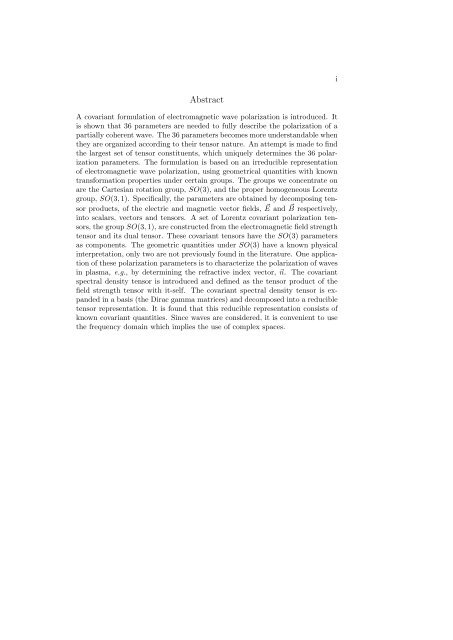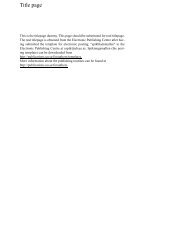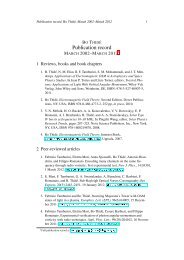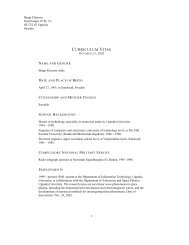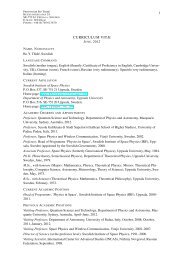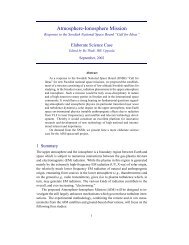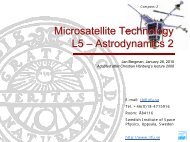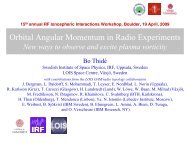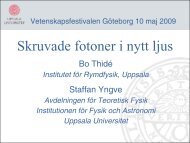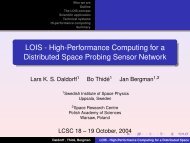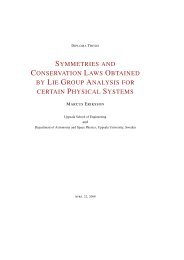Towards a covariant formulation of electromagnetic wave polarization
Towards a covariant formulation of electromagnetic wave polarization
Towards a covariant formulation of electromagnetic wave polarization
You also want an ePaper? Increase the reach of your titles
YUMPU automatically turns print PDFs into web optimized ePapers that Google loves.
i<br />
Abstract<br />
A <strong>covariant</strong> <strong>formulation</strong> <strong>of</strong> <strong>electromagnetic</strong> <strong>wave</strong> <strong>polarization</strong> is introduced. It<br />
is shown that 36 parameters are needed to fully describe the <strong>polarization</strong> <strong>of</strong> a<br />
partially coherent <strong>wave</strong>. The 36 parameters becomes more understandable when<br />
they are organized according to their tensor nature. An attempt is made to find<br />
the largest set <strong>of</strong> tensor constituents, which uniquely determines the 36 <strong>polarization</strong><br />
parameters. The <strong>formulation</strong> is based on an irreducible representation<br />
<strong>of</strong> <strong>electromagnetic</strong> <strong>wave</strong> <strong>polarization</strong>, using geometrical quantities with known<br />
transformation properties under certain groups. The groups we concentrate on<br />
are the Cartesian rotation group, SO(3), and the proper homogeneous Lorentz<br />
group, SO(3, 1). Specifically, the parameters are obtained by decomposing tensor<br />
products, <strong>of</strong> the electric and magnetic vector fields, ⃗ E and ⃗ B respectively,<br />
into scalars, vectors and tensors. A set <strong>of</strong> Lorentz <strong>covariant</strong> <strong>polarization</strong> tensors,<br />
the group SO(3, 1), are constructed from the <strong>electromagnetic</strong> field strength<br />
tensor and its dual tensor. These <strong>covariant</strong> tensors have the SO(3) parameters<br />
as components. The geometric quantities under SO(3) have a known physical<br />
interpretation, only two are not previously found in the literature. One application<br />
<strong>of</strong> these <strong>polarization</strong> parameters is to characterize the <strong>polarization</strong> <strong>of</strong> <strong>wave</strong>s<br />
in plasma, e.g., by determining the refractive index vector, ⃗n. The <strong>covariant</strong><br />
spectral density tensor is introduced and defined as the tensor product <strong>of</strong> the<br />
field strength tensor with it-self. The <strong>covariant</strong> spectral density tensor is expanded<br />
in a basis (the Dirac gamma matrices) and decomposed into a reducible<br />
tensor representation. It is found that this reducible representation consists <strong>of</strong><br />
known <strong>covariant</strong> quantities. Since <strong>wave</strong>s are considered, it is convenient to use<br />
the frequency domain which implies the use <strong>of</strong> complex spaces.


